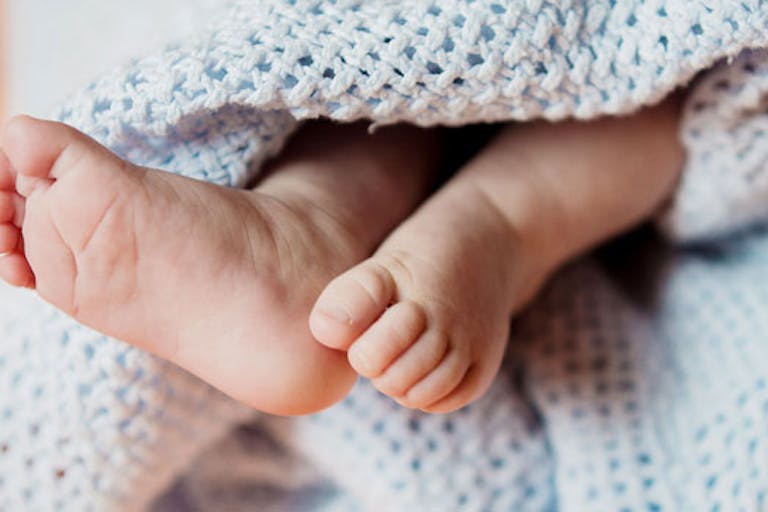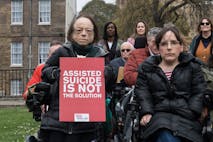
Christian college allows pro-life club after resolving 'misunderstanding'
Bridget Sielicki
·
Mom of baby with anencephaly: Doctor lied to try to scare me into abortion
In a booklet intended to encourage parents of preborn babies with medical conditions to choose life, a mother named Anne shared the story of her daughter, Emma. Doctors determined that Emma had anencephaly while she was in the womb. The doctor who was supposed to deliver Emma was frustrated by Anne’s decision to carry to term. He used scare tactics to try and convince her to abort:
[My doctor] tried hard to scare me by telling me all the horrible things that would happen to me during this pregnancy, namely, that I would develop polyhydramnios, where I would develop an excess of amniotic fluid “and would blow up like a woman with triplets”. Also, that I would not be able to properly labor because of the baby’s lack of a skull, and consequently, the lack of pressure available to help my cervix dilate during labor. I would probably need him to cut open my cervix or need a cesarean, and “did I really want to deal with a C-section on top of a funeral?” Although I was shaken by this information, I still felt that I could recover from a C-section eventually but that I would never have another chance to hold my baby, even if it were just for minutes.
When Anne did her own research, she discovered that the doctor’s warnings were misleading and even untrue:
I decided to research the information he gave me and found it to be basically false. Although polyhydramnios is a possibility, there are also simple ways to treat it. I also found no examples of anencephalic births needing C-sections. I confronted him with this information, and he replied that “It would’ve been a lot easier for him if I did not know so much.” Then and there I decided I would not have this baby with him.
The doctor had lied in an attempt to scare Anne into aborting her daughter. Anne was able to find another doctor, one who supported her decision to carry to term.
READ: ‘I miss those kicks’: Remembering twin with anencephaly brings healing
Emma lived much longer after birth than her doctors had expected:
Article continues below
Dear Reader,
Have you ever wanted to share the miracle of human development with little ones? Live Action is proud to present the "Baby Olivia" board book, which presents the content of Live Action's "Baby Olivia" fetal development video in a fun, new format. It's perfect for helping little minds understand the complex and beautiful process of human development in the womb.
Receive our brand new Baby Olivia board book when you give a one-time gift of $30 or more (or begin a new monthly gift of $15 or more).
Emma lived for five wonderful days in which she was held, loved, snuggled, bathed, sung to, and adored. Our two children, Bethany (three) and Hannah (19 months) just couldn’t get enough of her. They held her, stroked her, kissed her, and generally behaved the way you would expect them to treat a new baby – with fascination and wonder. I believe it was easy for them to accept Emma’s “broken head” because we did.
Anne has no regrets:
My greatest comfort right now is that we never ran away from loving Emma. We were with her all the time, protecting her, defending her, and cherishing her. I believe that living with the pain of her dying is hard enough, but I’m grateful that we have no guilt or regrets.
Studies have shown that couples who give birth to babies that are unable to survive do better emotionally than families that abort these babies.
Source: Bernadette Zambri Hope in Turmoil: A Guide for Decision-Making after Receiving a Difficult Prenatal Diagnosis regarding Your Baby (2014)
“Like” Live Action News on Facebook for more pro-life news and commentary!
Live Action News is pro-life news and commentary from a pro-life perspective.
Contact editor@liveaction.org for questions, corrections, or if you are seeking permission to reprint any Live Action News content.
Guest Articles: To submit a guest article to Live Action News, email editor@liveaction.org with an attached Word document of 800-1000 words. Please also attach any photos relevant to your submission if applicable. If your submission is accepted for publication, you will be notified within three weeks. Guest articles are not compensated (see our Open License Agreement). Thank you for your interest in Live Action News!

Bridget Sielicki
·
Politics
Bridget Sielicki
·
Issues
Sheena Rodriguez
·
Guest Column
Right to Life UK
·
Issues
Bridget Sielicki
·
International
Cassy Cooke
·
Guest Column
Sarah Terzo
·
Abortion Pill
Sarah Terzo
·
Guest Column
Sarah Terzo
·
Guest Column
Sarah Terzo
·
Guest Column
Sarah Terzo
·